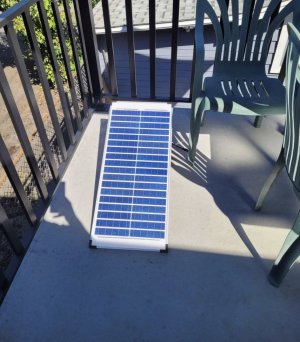Adler
Well-Known Member
Last winter I had battery issues when the boat sat for more than a few weeks, and ended up having one battery replaced under warranty. I almost installed a noco charger, but with that new battery and regular spring runs, no issues. Now having pulled the boat for winter and with the possibility of not taking it out for a few months, I am back to wanting a solar panel to keep the deep cycle, and maybe the starter, topped up. I like solar better than the Noco plan because I could see using it in the summer too when out on extended boat camping trips.
I searched other posts, but what I see is mostly for those with more electrical requirements than I have. No fridge, no inverter, just 2 batteries for the motors, scottys, radio, radar and GPS. And frequent phone charging lol. I have been searching online, see some basic panels from Amazon etc. Ideally I'd like to connect permanently to the batteries and leave the cords accessible so I can hook up the panel when needed. Hopefully with longer cords too (I.e 12-15') so I can put the panel on the roof. Make sense?
Anyone else have this setup? Which panel did you chose? Suggestions? Thanks in advance.
I searched other posts, but what I see is mostly for those with more electrical requirements than I have. No fridge, no inverter, just 2 batteries for the motors, scottys, radio, radar and GPS. And frequent phone charging lol. I have been searching online, see some basic panels from Amazon etc. Ideally I'd like to connect permanently to the batteries and leave the cords accessible so I can hook up the panel when needed. Hopefully with longer cords too (I.e 12-15') so I can put the panel on the roof. Make sense?
Anyone else have this setup? Which panel did you chose? Suggestions? Thanks in advance.


